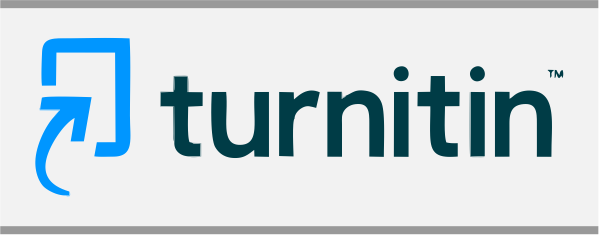THE EFFECT OF REFORMULATION TECHNIQUE TO IMPROVE STUDENTS’ WRITING ABILITY
(1) Lecturer of IAIN Curup
(*) Corresponding Author
Abstract
The purpose of this research is to investigate whether reformulation technique gives significant effect on student’s writing ability. The design of this research is an experimental research that is classified into a randomized pretest and posttest group design. There are two groups involved in this research: experiment and control group. Those two groups are chosen based on the normality and homogenity calculations. The instrument used is writing test which is given as pretest and posttest. To ensure the validity and reliability of the instrument, it was tried out before being used and the students’ writings were scored by three raters. The data were analyzed by using T-test. The result shows that this technique gives significant effect to students’ ability in writing.
Keywords
Full Text:
PDFReferences
Bartram, Mark, and Walton, Richard. 2002. Correction: A Positive Approach to language Mistakes. London: Heinle.
Brown, H. Douglas. 2004. Language Assesment: Principles and Classroom Practices. New York: Pearson Education, Inc.
Celce-murcia, Marianne. 2001. Teaching English as A Second or Foreign Language, Third Edition. US: Heinle & Heinle.
Creshwell, J. W. 2008. Educational Research: Planning, Conducting, and Evaluating Quantitative and Qualitative Research (3rd). New Jersey: Pearson Education.
Depdiknas. 2004. Standar Kompetensi Lulusan dan Spesifikasi Ujian Akhir SMP/MTS. Jakarta: Pusat penilaian pendidikan, badan penelitian dan pengembangan Depdiknas
Gabrielatos, Costas. 2002. EFL Writing: Product and Process. Published in three parts in ELT News 133, 134 & 135 (March, April & May 2000). ERIC, ED476839.
Gay, L. R., and Airasian, P. 2000. Education Research: Competencies of Analysis and Application (6th). Collombus : Merrill Publishing Company.
Gerot, Linda dan Wignel, Peter. 1994. Making Sense of Functional Grammar. Sidney: Antipodean Educational Enterprises (AEE).
Harmer, Jeremy. 1998. How to Teach English: An Introduction to the Practice of English Language Teaching . Malay: Longman.Hatch and Farhady.
Harmer, Jeremy. 2007. How to Teach English. England: pearson education limited.
Hefferman, et al. 1996. Writing A College Handbook. New York, London:W.W Norton and Company
Herrel, Adrienne L., and Jordan, Michael. 2008. Fifty Strategies for Teaching English Language Learners. New Jersey: Pearson Education, Inc.
Hughes, Arthur. 2003. Testing for Language Teachers. UK: Cambridge University Press.
Hyland, Ken. 2002. Teaching and Researching Writing. London: pearson education.
James, Carl. 1998. Errors In Language Learning And Use: Exploring Error Analysis. England: Addison Wesley Longman limited.
Knapp, P. and Watkins, M. 2005. Genre, Text, Grammar: Technologies for Teaching and Assessing Writing. Sydney: University of New South Wales Press.
Krashen, Stephen D., and Terrel, Tracy D. 1988. The Natural Approach: Language Acquisition in The Classroom. UK: Prentice Hall International.
Lingzhu, Li. 2009. Genre-based Approach for Teaching English Factual Writing. Retrieved from http://www.hltmag.co.uk/apr09/mart02.htm in 25 sept 2011.
Luchini, Pedro Luis, and Roldán, Valeria. Monitoring the implementation of the reformulation technique in the EFL writing class: A case study in Argentina. Iranian Journal of Language Studies (IJLS), Vol. 1(4), 2007 (pp. 227-248) from http://www.ijls.net/volumes/volume1issue4/luchini1. pdf
Myers ,Sharon. 1997. Teaching Writing as a Process and Teaching Sentence-Level Syntax: Reformulation as ESL Composition Feedback. TESL-EJ, ISSN 1072-4303 June 1997 — Volume 2, Number 4
Nunan, David. 1999. Second Language Teaching and Learning. USA: Heinle.
Paltridge, B. 2001. Genre in the Language Learning Classroom. Michigan, University of Michigan Press.
Pardiyono. 2007. Pasti Bisa! Teaching Genre-Based Writing. Yogyakarta: C.V. andy.
Sudjana. 2005. Metoda Statistiika. Bandung: Tarsinto.
Thornbury, Scott. 2008. How to Teach Grammar. England: Pearson Educational Limited.
Tompkins, Gail E. 2000. Teaching Writing: Balancing Process and Product. US: Pearson Education.
Ur, Penny. 2000. A Course in A Language Teaching: Practice and Theory. London: Cambridge teacher training and development.
Weaver, Constance. 2008. Grammar to Enrich and Enhance Writing. Portsmouth: Heinemann.
Yan, Guo. 2005. A Process Genre Model for Teaching Writing. English teaching forum vol 43 Number 3 2005.
Young, Dolly Jesusita. 1999. Affect in Foreign Language and Second Language Learning: A Practical Guide to Creating A Low-Anxiety Classroom Atmosphere. US: McGraw-hill Companies, Inc.
DOI: 10.24235/eltecho.v3i2.3604
Article Metrics
Abstract view : 304 timesPDF - 68 times
Refbacks
- There are currently no refbacks.
Â
This Journal is indexed by:
Â

This work is licensed under a Creative Commons Attribution 4.0 International License.










